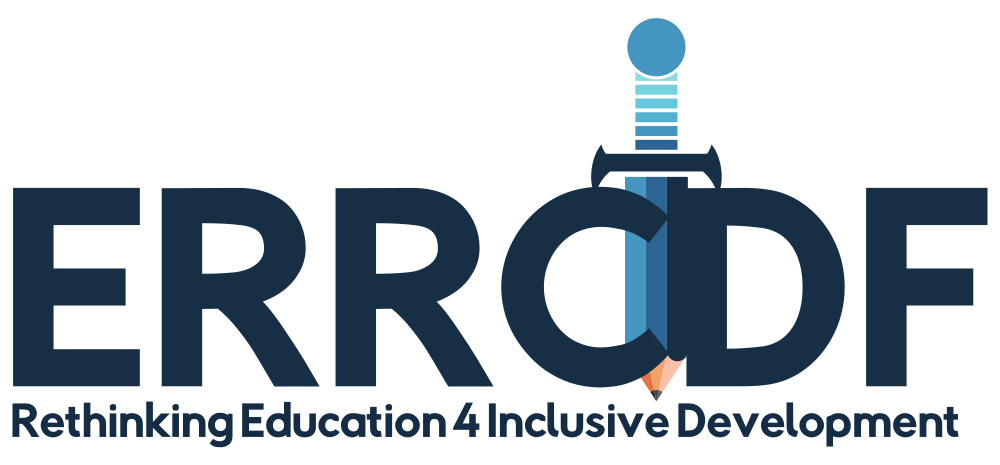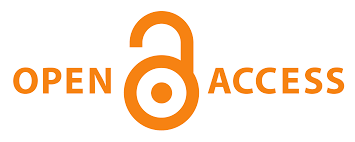Senior high school students’ usage of time and its impact on their academic achievement in Northern Ghana
DOI:
https://doi.org/10.51986/ijer-2021.vol3.02.06Keywords:
Academic achievement, group-study, Self-study, Instructional time, Time utilisation, Senior high schoolsAbstract
Research studies have investigated the influence of institutional characteristics on student academic achievement. However, relatively little research focuses on time utilisation and its impact on student academic achievement. The current study investigated students’ utilisation of time in public senior high schools in the Northern Region of Ghana. The study aimed to determine how students utilisation of time on self-study, group study, religious activities, and classroom instructional activities predicted their academic achievements. A total of 500 students sampled from 7 public senior high schools in the Northern Region of Ghana participated in the study. The research design employed was the cross-sectional survey research design. The instrument used to collect the data was a questionnaire. Analysis was done using multiple regression analysis with the aid of the SPSS (Version 16) software. The results suggest that the time students spent attending classes positively and significantly influences their academic achievement. Class attendance, group studies and self-studies times were found to be positively related. The study recommends that students group study and self-study activities should be made compulsory and that adequate time should be allotted within study hours for students to engage in meaningful self-study and group study activities.
References
Altonji, J. G., & Dunn, T. A. (1996). Using siblings to estimate the effects of school quality on wages. The Review of Economic and Statistic, 78 (4), 10-36. https://doi.org/10.2307/2109953
Alhassan, A. (2009). An assessment of the effects of teacher absenteeism on quality teaching and learning in primary schools in Northern Ghana. A draft report submitted to the Results for Development Institute (R4D), Tamale, Ghana.
Allen, G. J., Lerner, W. M., & Hinrichsen, J. J. (1972). Study behaviours and their relationships to test anxiety and academic performance. Psychological Reports, 30(6), 407–410. https://doi.org/10.2466/pr0.1972.30.2.407
Andretti, V., & Addadio, R. D. (2012). Does class attendance affect academic performance? Evidence from D’ Annunzio University. Universita Degli Studi: University D’ Annunzio.
Anderson, L. M. (1980). What are students doing when they do all that seatwork? Journal of Curriculum Studies, 13, 289-303.
Babbie, E. R. (1990). Survey research methods. Belmont, C.A.: Wadworth.
Beer, J. (1992). Classroom and home study times and grades while at college using a single subject design. Psychological Reports, 71(10), 233–234.
Blau, D. (1999) Effect of income on child development. The Review of Economic Statistics, 10 (3), 338-417.
Blazar, D., Braslow, D., Charalambous, C. Y., & Hill, H. C. (2015). Attending to general and content-specific dimensions of teaching: Exploring factors across two observation instruments. Working paper: Harvard University. https://doi.org/10.1080/10627197.2017.1309274
Bratti, M & Staffolani, S. (2002). Students’ time allocation and education production functions. Quadern Di Ricerca, 170.
Borg, W. R. (1980). Time and School learning. Washington, DC: National Institute of Education, 1980.
Cotton, K., & Savard, W. G. (1981). Time factors in learning. Portland, OR: Northwest Regional Educational Laboratory.
Danielson, C. (1996). Enhancing Professional Practice: A framework for teaching. Association for supervision and curriculum development
Denscombe, M. (1998). The good research guide: For small-scale social research projects. Buckingham: Open University Press.
Dees, D. M. (2007). A Transactional Model of College Teaching. International Journal of Teaching and Learning in Higher Education, 19 (2), 130-139.
Derevensky, J. K. Hart, S., & Farrel, M. (1983). An examination of achievement related behaviour of high and low achieving inner-city pupils. Psychology in the Schools, 20, 328- 336.
Dolton, L., Marcenaro O. D., Navarro. L. (2001). The effective use of students’ time. A stochastic Frontier production function case study. London: Center for the economics of education. http://eprints.lse.ac.uk/id/eprint/19545
Downes, A. S. (2007). Labour markets and human resources development in the Caribbean”. Downes Papers, 3, 2-10.
Dolmans, D. H., De Grave, W., Wolfhagen, I. H. A. P., & Van der Vleuten, C. P. M. (2005). Problem based learning: Future challenges for educational practice and research. Medical Education, 39, 732–741. https://doi.org/10.1111/j.1365-2929.2005.02205.x
Edmonds, R. R. (1981). Search for effective schools. NIE, East Lansing, MI: The institute for Research on Teaching, College of Education, Michigan State University.
Fisher, C. W. & Berliner, D. C. (1995). Perspectives on instructional time. New York: Longman.
Frederick, W. C. & Wahlberg, H. J. (1980). Learning as a function of time. The Journal of Educational Research, 73(4), 183–194.
Gortner, L., A. Lahmers, A., & Zulauf, C. R. (2000). Factors associated with academic time use and academic performance of college students: A recursive approach. Journal of College Student Development, 41, 544–556.
Grave, B. S. (2010). The effect of student time allocation on academic achievement. Ruhr Economic Papers, 255, 3-47.
Good, T. L., & Beckerman, T. M. (1978). Time on task: A naturalistic study in sixth grade classrooms. The Elementary School Journal, 78, 193-201.
Guskey, T. L., & Gates, S. L. (1986). Synthesis of research on the mastery learning in elementary and secondary classrooms. Educational Leadership, 43, 73-80.
Hanushek, E. A. (1979). Conceptual and empirical issues in the estimation of educational production functions. The Journal of Human Resources, 14(3), 351-388.
Hanushek, E. A., & Rivkin, S. G. (2007). Teachers, Schools, and Academic Achievement. Presented at the annual meeting of the economic society, Chicago U.S.A.
Hinrichsen, J. J. (1972). Prediction of grade point average from estimated study behaviours. Psychological Reports, 31, 974-983.
Hossler, C., Stage, F., & Gallagher, K. (1988). The relationship of increased instructional time to students’ achievement. Policy Bulletin: Consortium on Educational Policy Studies (1). 2-5. https://eric.ed.gov/?id=ED298671
Kelly, K., Clark, B., Brown, V., & Sitziz, J. (2003). Good practice in the conduct and reporting of survey research. International Journal for Quality Health Care, 15 (3), 261-266. https://doi.org/10.1093/INTQHC/MZG031
Karweit, N. (1985). Should we lengthen the school term? Educational Researchers, 14, 9-15.
Karweit, N. (1984). Time scales, learning events, and productive instruction. Sociology of Education, 49, 236-246.
Karweit, N. (1982). Time on task. Time Research Review, 10, 332-346.
Karweit, N. (1976). Quantity of schooling: A major educational factor? Educational Researchers, 5, 15-17.
Lezotte, L. W., Skaife, R. D., & Holstead, M. D. (2002). Effective Schools: Only you can make a difference. New York: All Star Publishing, 2002.
Lomax, R. G., &. Cooley, W. W. (1979). The student achievement in instructional time relationship. Pittsburgh, PA: Learning Research and development center, university of Pittsburg.
Michaels, J. W. & T. D. Miethe, T. D. (1989). Academic efforts and college grades. Social Forces, 68, 309-319.
Milto, E., & Rogers, C. (2002). Gender differences in confidence levels, group interactions and feeling about competition in an introductory Robotics course. 32nd ASEE/IEEE frontier in education conference.
Olaniyan, D. A., & Okemakinde, T. (2008). Human capital theory: Implications for educational development. Journal of Educational Development, 3 (1), 43-57.
Quartarola, B. A. (1984). Time on task and the extended school day and their relationship to improving students’ achievement. Sacramento, C.A: California
Romer, D. (1993). Do students go to class? Should they”? Journal of Economics Perspectives, 3, 167-174.
Rosenshine, B. V. (1979). Content, time, and direct instruction in research on teaching: Concepts findings, and implications. Berkeley, CA: McCutchan Publishing Corp.
Schmidt, M. (1983). Who maximises what? A study in student time allocation. The American Economic Review, 16-45.
Smith, E. T. (1990). Time and academic achievement. Journal of Youth and Adolescence, 12, 19-36.
Sanford, J. P., & Everton, C. M. (1983). Time use and activities in junior high classes. Journal of Educational Research, 76, 140-147.
U.N.D.P. (2006). National human development report: Educational transformation in Armenia. U.N.D.P publications
Van den Bossche, P., Gijselaers, W. H., Sergers., M., & Kirschner, P. A. (2006). Social and cognitive factors driving teamwork in collaborative learning environment: Team learning beliefs and behaviours”. Small Group Learning, 37(5), 490-521.
Van den Hurk, M. M., & Wolfhagen, I. H. (1998). The relation between times spent on individual study and academic achievement in a problem-based curriculum. Advances in Health Sciences Education, 3, 43–49.
World Bank (2012). World development report: Gender equality and development. Washington, D. C.
Wagstaff, R., & Mahmoudi, H. (1976). Relation of study behaviors and employment to academic performance. Psychological Reports, 38, 380-382.
Wali, S. Y., Abulfathi, F. A., & Mustapha, A. M. (2019). Impact of Classroom Environment on Students` Performance in English Language. Journal of Education and Practice 10(17), 445-451.
Zimmerman, D. J. (2003). Peer effects in academic outcomes: Evidence from natural experiment. The Review of Economics and Statistics, 66, 33-43.
Downloads
Published
How to Cite
Issue
Section
License
Copyright (c) 2021 SettingsPeter Yidana

This work is licensed under a Creative Commons Attribution-NonCommercial-NoDerivatives 4.0 International License.










